Sponsored by Wakasa Takahama Tourism Association
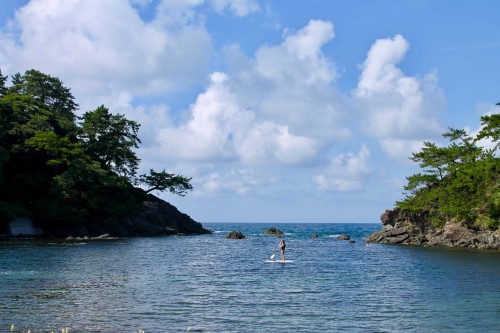
Wakasa Takahama area in Fukui Prefecture (near Kyoto) is commonly associated with its scenic coastline – and even more commonly associated with beaches. But whilst you’re on this side of the Japan, there are some other must-see spots that are worth exploring.
In this post, I’ll show you some of the highlights of this scenic area. Including the stunning views across the terraced rice fields of Hibiki, Mount Aoba – Takahama’s little Fuji and Nakayama Temple. As well as how to get there and what to consider to enjoy your trip to the fullest.
Mt Aoba – Wakasa Takahama’s Little Fuji
Much like its alias-namesake, Mount Aoba, is visible from most points around Takahama. Yet, its elevation is only 693 meters, making it around 3000 meters shorter than Fuji – and therefore much more fun to climb!
There are two routes for climbing Mount Aoba – the main pilgrimage course (巡礼古道コース) and the climbing course (登山コース). The course routes and also main photo points are indicated on the official map.
We climbed Aoba-san on 4th August (mid-summer) and decided to take the climbing course (登山コース) starting from Point 1 (中山寺), until the mountain summit (山峰). This route is around 5 km there and back, and took us around 3 hours: 2 hours up (including rest stops) and 1 hour back down.
What to Bring
The route isn’t too taxing, but during the summer it can get extremely hot. Luckily the climb is mostly shaded, so there is a lower risk of sunburn or heatstroke. Here are my recommendations on what to take:
- Water – none available on the route
- Bells – to deter bears. A limited number are available to borrow from the Herbal Village (at the base of Mount Aoba), just ask the staff!
- Comfortable walking clothes – layers are the best option incase you get too hot or cold
- Trainers or hiking shoes – I walked in my running shoes with no issues
- Insect repellant (optional – depending upon how well covered you are)
- Walking sticks (optional – we were fine without them)
The Hike: Climbing Course (登山コース)
Free parking is available at the base of Mount Aoba (at Herbal Village) which is about 20 minutes drive from Wakasa Takahama centre. From there you can follow the signs to the start of the trail.
Before starting though, be sure to complete one of the safety forms which is available next to the map at the entrance (shown above).
- 氏名 – Name
- 人 – People (add the number of people climbing)
- Year – 年, Month – 月, Day -日
- Hour – 時 Minute – 分 (start time)
- 午前 – a.m. or 午後 – p.m.
- 住所 – Address
- 電話番号 – Contact number
When you’re ready to go, just take it easy and enjoy the ascent! The route is well-trodden and there are even wooden steps throughout much of it, with no particularly steep or technical areas. Along the way, you will also find benches so you can take a breather if you need. Around the woods you will see various dragonflies, butterflies and interesting kinds of bugs, we even saw two grass snakes!
Around 1 hour from the base is Point 2 – indicated by the wooden seating area. In my opinion, this hut actually offers the best view along this route. If you are not too concerned about conquering the mountain, and are merely seeking a view, I would recommend stopping here because the view from the summit (山峰) is more obstructed by trees.
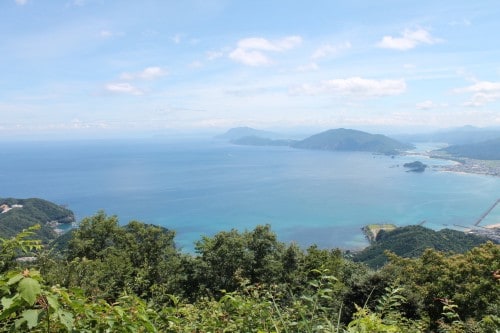
If you do decide to continue, the climb is much of the same as before, and the summit looks like this!
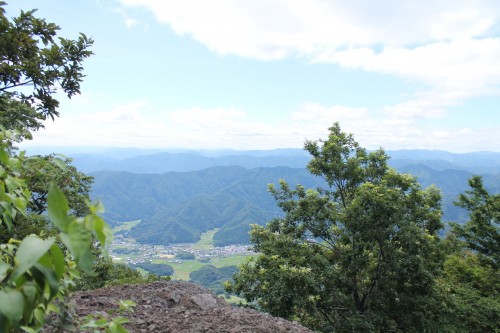
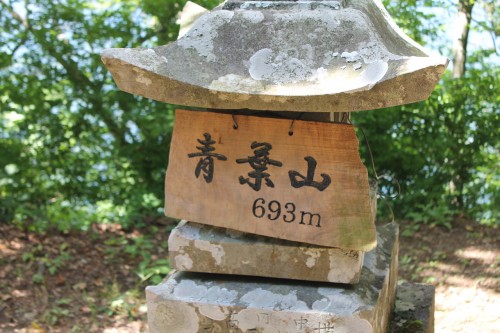
After your climb, you can relax with some healthy food and drinks at the gorgeous café in Herbal Village.
Nakayama Temple
Nakayama Temple is a Buddhist temple only 10 minutes drive uphill from Wakasa Takahama centre. It offers views across Wakasa Bay. Why not take the time to relax here, immersed in nature, or in the beautiful temple building?
Hibiki no Tanada: Terraced Rice Fields and Local Cuisine
Around 30 minutes drive along the coast, north west from Wakasa Takahama centre, is the small village of Hibiki, which is famous for both its rice terrace view as well as its local fishing culture for Wakasa fugu blowfish and mackerel. The bold greens and blues of this landscape have earnt Hibiki the name “one of Japan’s finest” rice terraces!
The incredible cuisine around the Takahama-Hibiki area can be enjoyed in local restaurants such as Egami, (源治). Local favourites are mackerel sushi and blowfish!
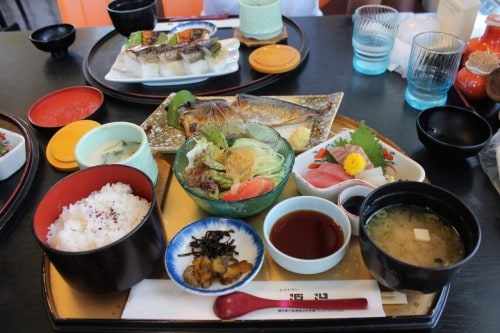
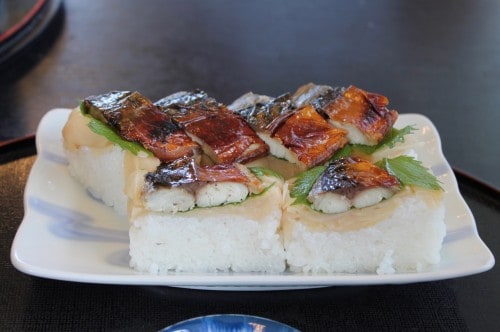
Sunsets
I couldn’t talk about unmissable spots without mentioning the sunsets here on the Sea of Japan, which are rated “One of Japan’s finest 100 sunsets“. I would recommend watching the sunset behind both Meikyodo Cave and Wada Beach, two of the town’s icons.
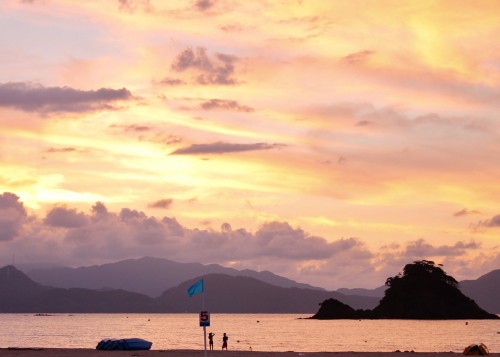
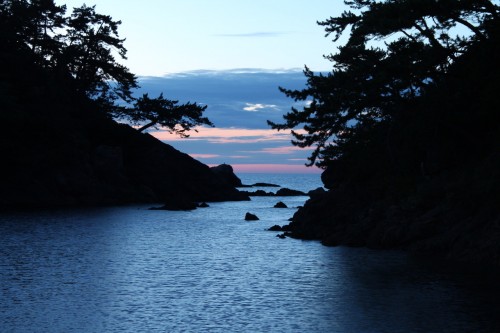
Around the Old Village of Wada
As the area is still fairly inconspicuous to foreign visitors, much of the old city retains an authentic Japanese feel. Just before, or after the sunsets, is the perfect time to explore the scenic buildings and small shrines around the residential areas of Wakasa Takahama.
For More Information
Located inside the train station to the right (just after the ticket counter) is the Wakasa Takahama Tourist Association. From there you can collect a rental bicycle, ask for more information about the tourist spots around the area or just say hello! If you’d like to speak to someone in advance please contact info@wakasa-takahama.jp or visit the website www.wakasa-takahama.jp. The friendly staff there can also help you to find accommodation at a local ryokan or minshuku (types of Japanese inns).
Access
The best way to reach many of the places in this post is by car. Taxis are available around the area but it would be most convenient (and much cheaper!) to rent a car.
I’ve done another post all about how to get to Wakasa Takahama from Kyoto, Osaka, Kanazawa and Tokyo, for full info, please check that out! If you are a foreign visitor to Japan, it may be worth getting a JR Pass (Japan Rail Pass) for your Japanese expedition. If you are planning to travel from Tokyo, then a JR Pass would cover your cost to and from Wakasa Takahama, and then some.
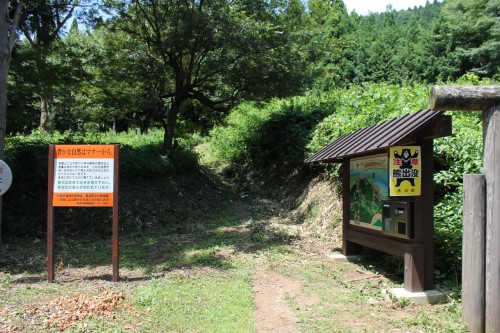
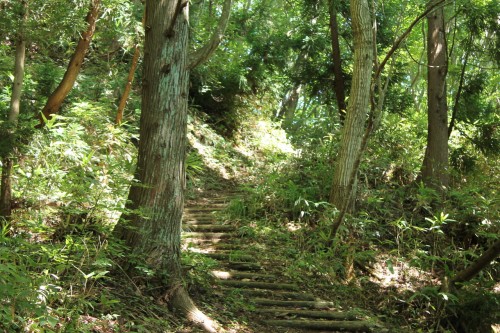
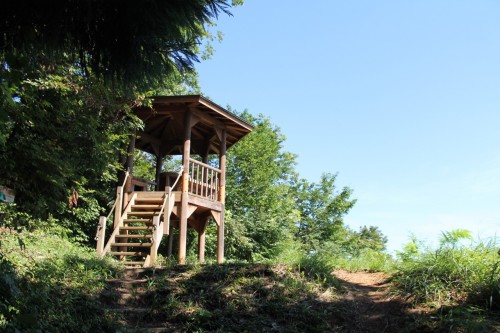

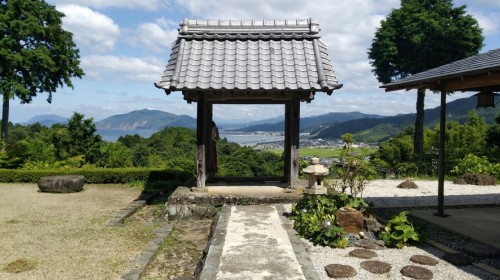
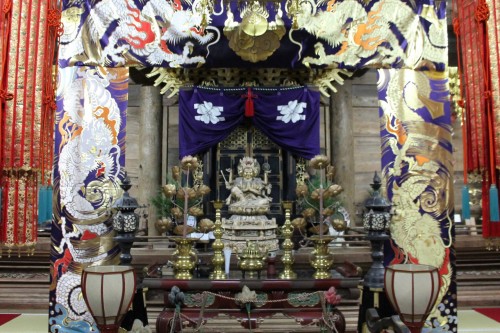
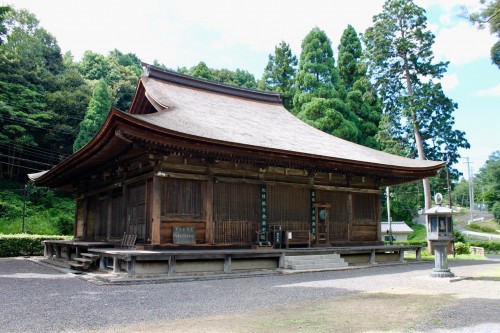
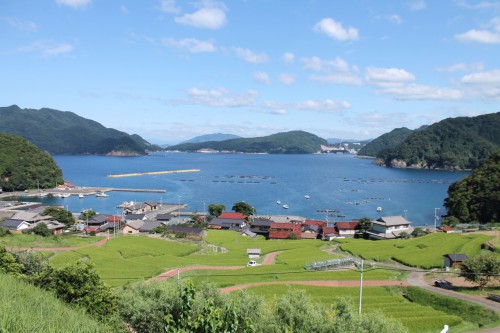
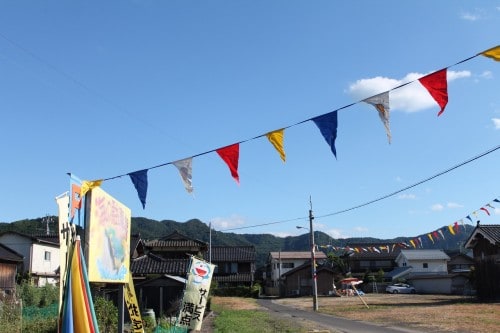
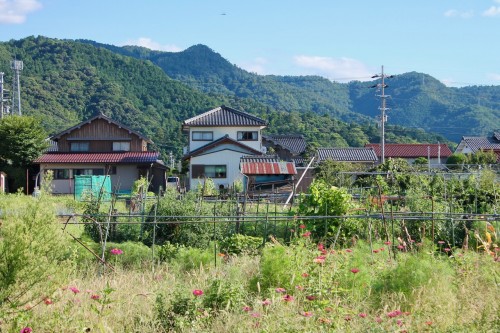
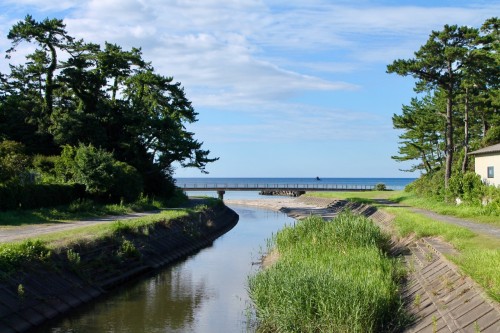
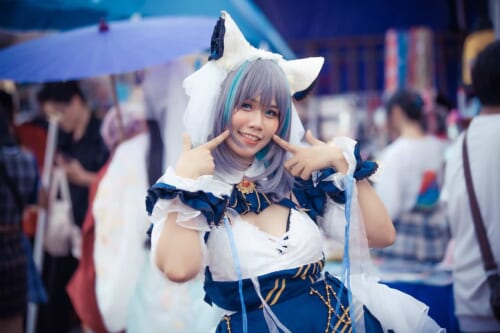
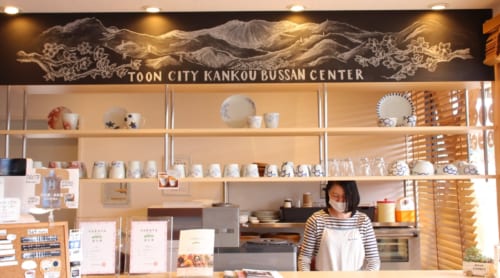
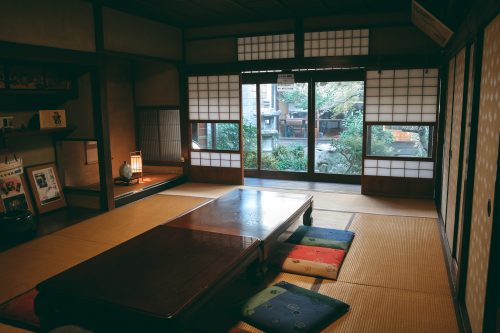
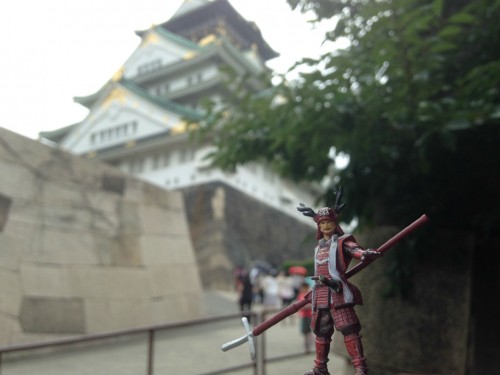
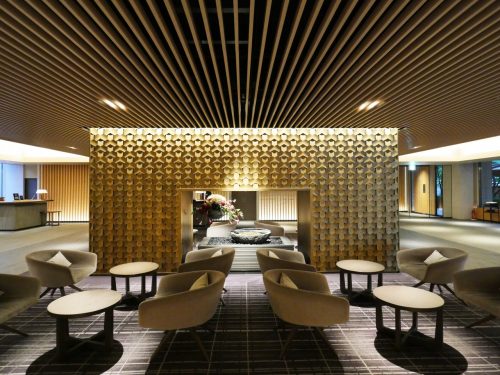


No Comments yet!